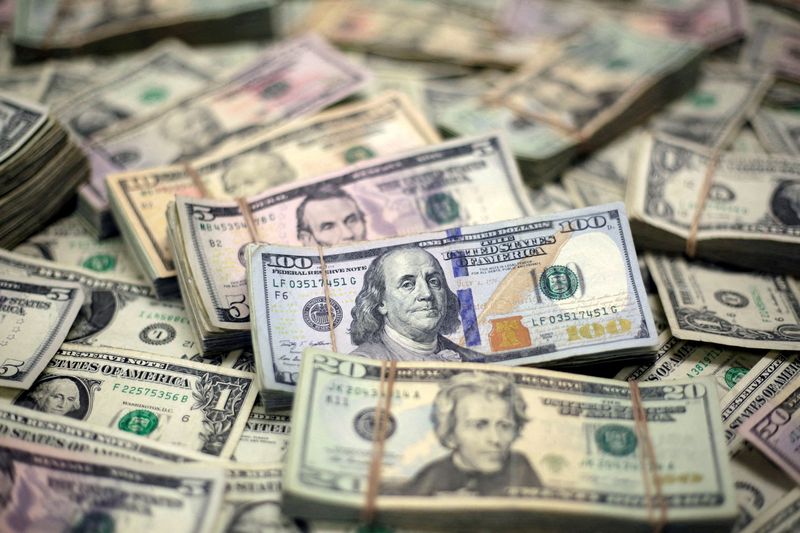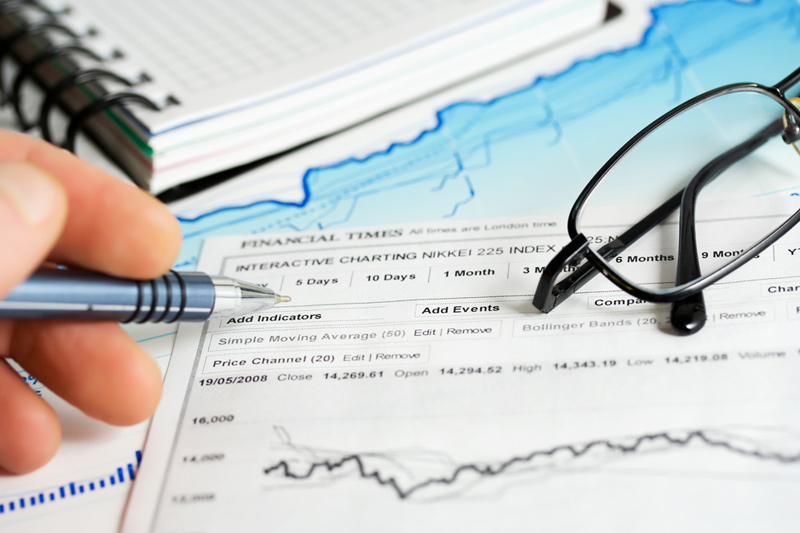By Saqib Iqbal Ahmed
NEW YORK (Reuters) -Traders gauging how to play further upside in the U.S. dollar are looking at the relative strength of economies around the world as interest rate shifts from global central banks shake currency markets.
The rate fell 4.8% against a basket of currencies in the third quarter, its worst quarterly performance in almost two years. Pressure on the US currency increased after the Fed made a massive 50 basis point cut last month, the first cut since 2020.
How much further the dollar will fall and which currencies will benefit may largely be a matter of returns. For years, US yields have been above those of most developed economies, boosting the dollar’s appeal against its peers.
That picture is shifting as the Fed and most other central banks cut interest rates to safeguard economic growth. Many traders who bet against the dollar do so through currencies whose interest rate gap with the dollar is expected to narrow.
Net bets on a weaker dollar have grown in the futures markets to $14.1 billion, the highest level in about a year, data from the Commodity Futures Trading Commission showed. However, the path down for the dollar is likely to be bumpy.
The relatively strong US economy could limit the extent to which the Fed cuts rates, complicating the prospects for further declines in the dollar. Meanwhile, the US presidential election and geopolitical concerns threaten to inject further volatility into currency markets in the coming weeks.
“It’s not necessarily ‘sell the dollar and buy everything,’” says Jack McIntyre, portfolio manager at Brandywine Global. “You have to be a little more selective.”
While rates have changed little this year, they are down around 5% from their April high, with the currency seeing a sharp decline against some other developed markets as US yields fell in anticipation of an easing of monetary policy by the Fed.
Some risks to the weaker view on the dollar have become clearer in recent days.
The dollar rose sharply against the British pound on Thursday after the Bank of England said it could move more aggressively to cut rates if inflation pressures continue to weaken.
A day earlier, data showed eurozone inflation fell below 2% in September for the first time since mid-2021, strengthening the case for the European Central Bank to cut rates this month, a potential source of weakness for the euros.
The role of the dollar as a safe haven has also become clear as tensions in the Middle East have escalated in recent days.
On the US side, Friday’s labor market data could help inform insights into the extent to which the Fed could cut rates for the remainder of the year.
While futures markets show another 68 basis points of priced-in cuts, a strong number could strengthen the case for more moderate policy easing. But “if we enter a weak period for the US economy, the market will discount further reductions in the curve and that will weaken the dollar,” said Christian Dery, head of macro strategy at Capital Fund Management.
Still, investors believe more downsides for the dollar remain in some corners of the market.
Paresh Upadhyaya, director of fixed income and currency strategy at Amundi US, said he is looking for “idiosyncratic stories such as widening interest rate differentials driven by divergence in monetary policy.”
His bet on a weaker dollar includes positions in the Norwegian krone and the Australian dollar. Norway’s central bank recently kept its policy rate at a 16-year high, indicating any cuts would have to wait until early 2025. Australia’s central bank held rates steady last week, saying interest rate cuts were unlikely in the near term.
Upadhyaya also increased a position in the Brazilian real. Unlike many of its peers, Brazil’s central bank raised interest rates last month as it looks to tackle the challenging inflation outlook. The Brazilian real has fallen about 10% against the dollar this year.
The Japanese yen could also find further support from divergent central bank policies, investors said. The Bank of Japan cut interest rates to 0.25% in July, a milestone in a decade-long stimulus program aimed at boosting economic growth.
Although the Bank of Japan has indicated it is in no rush to raise rates further, the narrowing gap between Japan and US yields has already fueled a 10% rally in the yen from its 2024 low against the dollar. Net bullish bets on the currency against the dollar amount to $5.8 billion, CFTC data shows.
“With global central banks also starting to cut rates, the yen will be the biggest gainer against the USD,” said Natsumi Matsuba, head of FX trading and portfolio management at Russell Investments.
An analysis of currency valuations based on measures such as purchasing power parity and real effective exchange rates published by BofA Global Research last month showed that the yen and Norwegian krone are among the developed world’s most undervalued currencies. The survey shows that the dollar and the Swiss franc are the two most overvalued countries.
However, whatever their positioning, investors also face potential volatility around the US presidential election, scheduled for November 5.

Uncertainty in the weeks before the vote could send safety-seeking investors to the dollar. Many investors also believe that a victory by Republican candidate Donald Trump could boost the dollar.
“The wild card in any forecast right now for our currency is the US election,” said Brandywine’s McIntyre, who remains bearish on the US dollar, but less so than before the currency’s recent decline. “That’s why it’s hard to be super judgmental.”


